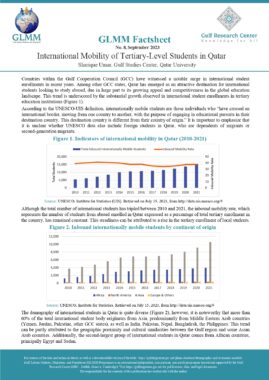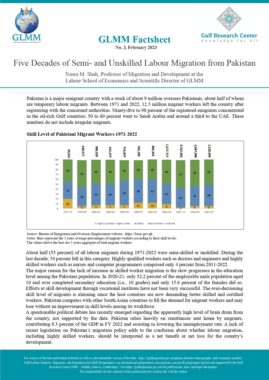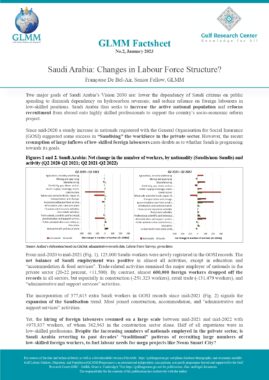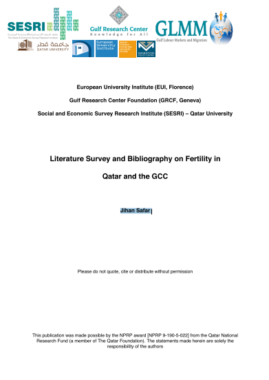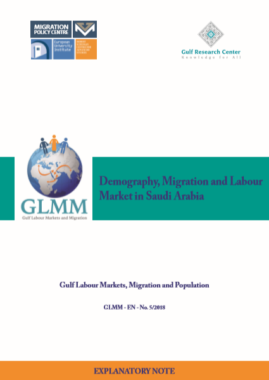Bahrain: Mobile students from Bahrain by receiving country (2005-2013)

| Time | 2005 | 2006 | 2007 | 2008 | 2009 | 2010 | 2011 | 2012 | 2013 |
| Afghanistan | |||||||||
| Albania | |||||||||
| Algeria | |||||||||
| American Samoa | |||||||||
| Andorra | |||||||||
| Angola | |||||||||
| Anguilla | |||||||||
| Antigua and Barbuda | |||||||||
| Argentina | |||||||||
| Armenia | |||||||||
| Aruba | |||||||||
| Australia | 183 | 210 | 256 | 253 | 234 | 213 | 192 | 148 | |
| Austria | 1 | 1 | 2 | 1 | |||||
| Azerbaijan | |||||||||
| Bahamas | |||||||||
| Bahrain | |||||||||
| Bangladesh | |||||||||
| Barbados | |||||||||
| Belarus | 1 | 1 | 2 | 1 | |||||
| Belgium | |||||||||
| Belize | |||||||||
| Benin | |||||||||
| Bermuda | |||||||||
| Bhutan | |||||||||
| Bolivia (Plurinational State of) | |||||||||
| Bosnia and Herzegovina | |||||||||
| Botswana | |||||||||
| Brazil | 6 | 2 | 3 | ||||||
| British Virgin Islands | |||||||||
| Brunei Darussalam | |||||||||
| Bulgaria | 1 | 1 | 1 | 1 | 1 | ||||
| Burkina Faso | |||||||||
| Burundi | |||||||||
| Cambodia | |||||||||
| Cameroon | |||||||||
| Canada | 96 | 105 | 99 | 99 | 87 | 84 | 78 | ||
| Cabo Verde | |||||||||
| Cayman Islands | |||||||||
| Central African Republic | |||||||||
| Chad | |||||||||
| Chile | |||||||||
| China | |||||||||
| China, Hong Kong Special Administrative Region | |||||||||
| China, Macao Special Administrative Region | |||||||||
| Colombia | |||||||||
| Comoros | |||||||||
| Congo | |||||||||
| Cook Islands | |||||||||
| Costa Rica | |||||||||
| Côte d’Ivoire | |||||||||
| Croatia | |||||||||
| Cuba | 2 | 1 | 1 | 1 | 1 | 1 | |||
| Curaçao | |||||||||
| Cyprus | 1 | ||||||||
| Czech Republic | 32 | 21 | 19 | 18 | 7 | 4 | 5 | 4 | |
| Democratic People’s Republic of Korea | |||||||||
| Democratic Republic of the Congo | |||||||||
| Denmark | 1 | 3 | 2 | ||||||
| Djibouti | |||||||||
| Dominica | |||||||||
| Dominican Republic | |||||||||
| Ecuador | |||||||||
| Egypt | |||||||||
| El Salvador | |||||||||
| Equatorial Guinea | |||||||||
| Eritrea | |||||||||
| Estonia | |||||||||
| Ethiopia | |||||||||
| Faeroe Islands | |||||||||
| Falkland Islands (Malvinas) | |||||||||
| Fiji | |||||||||
| Finland | 1 | 1 | 1 | 1 | |||||
| France | 13 | 17 | 29 | 41 | 50 | 42 | 36 | 34 | |
| French Guiana | |||||||||
| French Polynesia | |||||||||
| Gabon | |||||||||
| Gambia | |||||||||
| Georgia | |||||||||
| Germany | 5 | 6 | 7 | 7 | 5 | 8 | 4 | 7 | |
| Ghana | |||||||||
| Gibraltar | |||||||||
| Greece | |||||||||
| Grenada | |||||||||
| Guadeloupe | |||||||||
| Guam | |||||||||
| Guatemala | |||||||||
| Guinea | |||||||||
| Guinea-Bissau | |||||||||
| Guyana | |||||||||
| Haiti | |||||||||
| Holy See | |||||||||
| Honduras | |||||||||
| Hungary | 2 | 1 | |||||||
| Iceland | |||||||||
| India | 368 | 435 | 270 | 228 | |||||
| Indonesia | |||||||||
| Iran (Islamic Republic of) | 1 | 3 | 3 | 3 | 1 | 1 | 3 | 1 | |
| Iraq | |||||||||
| Ireland | 23 | 23 | 18 | 17 | 64 | 30 | 25 | 16 | |
| Israel | |||||||||
| Italy | 4 | 2 | 2 | 4 | 3 | 6 | |||
| Jamaica | |||||||||
| Japan | 4 | 4 | 5 | 6 | 7 | 6 | 9 | 6 | |
| Jordan | 371 | 349 | 501 | 634 | 621 | 739 | 664 | 673 | |
| Kazakhstan | |||||||||
| Kenya | |||||||||
| Kiribati | |||||||||
| Kuwait | 102 | 87 | |||||||
| Kyrgyzstan | |||||||||
| Lao People’s Democratic Republic | |||||||||
| Latvia | |||||||||
| Lebanon | |||||||||
| Lesotho | |||||||||
| Liberia | |||||||||
| Libya | |||||||||
| Liechtenstein | |||||||||
| Lithuania | |||||||||
| Luxembourg | |||||||||
| Madagascar | |||||||||
| Malawi | |||||||||
| Malaysia | 2 | 2 | 80 | 128 | 115 | 167 | 166 | ||
| Maldives | |||||||||
| Mali | |||||||||
| Malta | |||||||||
| Marshall Islands | |||||||||
| Martinique | |||||||||
| Mauritania | |||||||||
| Mauritius | |||||||||
| Mexico | |||||||||
| Micronesia (Federated States of) | |||||||||
| Monaco | |||||||||
| Mongolia | |||||||||
| Montenegro | |||||||||
| Montserrat | |||||||||
| Morocco | 16 | 19 | 16 | 11 | 10 | ||||
| Mozambique | |||||||||
| Myanmar | |||||||||
| Namibia | |||||||||
| Nauru | |||||||||
| Nepal | |||||||||
| Netherlands | |||||||||
| Nl Antilles | |||||||||
| New Caledonia | |||||||||
| New Zealand | 16 | 29 | 51 | 74 | 84 | 75 | 42 | ||
| Nicaragua | |||||||||
| Niger | |||||||||
| Nigeria | |||||||||
| Niue | |||||||||
| Norfolk Island | |||||||||
| Norway | |||||||||
| Oman | 29 | 24 | 70 | 68 | 62 | 70 | 31 | ||
| Pakistan | |||||||||
| Palau | |||||||||
| Palestine | |||||||||
| Panama | |||||||||
| Papua New Guinea | |||||||||
| Paraguay | |||||||||
| Peru | |||||||||
| Philippines | 3 | 3 | 1 | ||||||
| Poland | 1 | 1 | 1 | 1 | 1 | 1 | |||
| Portugal | 2 | 1 | 1 | ||||||
| Puerto Rico | |||||||||
| Qatar | 112 | 107 | 108 | 159 | 176 | 217 | 231 | ||
| Republic of Korea | 1 | 2 | 3 | 2 | 1 | ||||
| Republic of Moldova | |||||||||
| Réunion | |||||||||
| Romania | 1 | 1 | 3 | 4 | 3 | ||||
| Russian Federation | 2 | 2 | |||||||
| Rwanda | |||||||||
| Saint Helena | |||||||||
| Saint Kitts and Nevis | |||||||||
| Saint Lucia | |||||||||
| Saint Pierre and Miquelon | |||||||||
| Saint Vincent and the Grenadines | |||||||||
| Samoa | |||||||||
| San Marino | |||||||||
| Sao Tome and Principe | |||||||||
| Saudi Arabia | 158 | 154 | 164 | 174 | 184 | 248 | 202 | 269 | 468 |
| Senegal | |||||||||
| Serbia | |||||||||
| Seychelles | |||||||||
| Sierra Leone | |||||||||
| Singapore | |||||||||
| Sint Maarten (Dutch part) | |||||||||
| Slovakia | 11 | 4 | 2 | 2 | 2 | 1 | 1 | ||
| Slovenia | 3 | ||||||||
| Solomon Islands | |||||||||
| Somalia | |||||||||
| South Africa | 3 | ||||||||
| South Sudan | |||||||||
| Spain | 6 | 1 | 2 | 4 | |||||
| Sri Lanka | |||||||||
| Sudan | |||||||||
| Sudan (pre-secession) | |||||||||
| Suriname | |||||||||
| Swaziland | |||||||||
| Sweden | 2 | 2 | 1 | 4 | |||||
| Switzerland | 1 | 3 | 4 | 6 | 6 | 3 | |||
| Syrian Arab Republic | |||||||||
| Tajikistan | |||||||||
| Thailand | 1 | 2 | 1 | 1 | 4 | ||||
| The former Yugoslav Republic of Macedonia | |||||||||
| Timor-Leste | |||||||||
| Togo | |||||||||
| Tokelau | |||||||||
| Tonga | |||||||||
| Trinidad and Tobago | |||||||||
| Tunisia | |||||||||
| Turkey | 1 | 1 | 2 | 2 | 2 | 2 | 2 | ||
| Turkmenistan | |||||||||
| Turks and Caicos Islands | |||||||||
| Tuvalu | |||||||||
| Uganda | |||||||||
| Ukraine | |||||||||
| United Arab Emirates | 404 | 467 | 535 | ||||||
| United Kingdom of Great Britain and Northern Ireland | 964 | 988 | 953 | 980 | 989 | 1,042 | 1,041 | 1,112 | |
| United Republic of Tanzania | |||||||||
| United States of America | 394 | 386 | 401 | 394 | 424 | 411 | 401 | 424 | |
| United States Virgin Islands | |||||||||
| Uruguay | |||||||||
| Uzbekistan | |||||||||
| Vanuatu | |||||||||
| Venezuela (Bolivarian Republic of) | |||||||||
| Viet Nam | |||||||||
| Western Sahara | |||||||||
| Yemen | |||||||||
| Zambia | |||||||||
| Zimbabwe |
Source: UNESCO, UIS
ANNEXED NOTE
1. Technical Notes and Definitions
The table refers to students enrolled in tertiary education (ISCED: levels 5, 6 and beyond)
Education statistics are compiled by UNESCO on the basis of national administrative sources, reported by Ministries of Education or National Statistical Offices of receiving countries.
The number of students enrolled refers to the count of students studying in the reference period.
Students are classified as international students if they left their country of origin and moved to another country for the purpose of study. Figures of mobile students are therefore different from figures of foreign students, who may be studying in the country they were residing prior to enrolling in higher education.
Germany: Data for the years 2008 and beyond are UIS estimates.
Absence of any data for a given country most often reflects “nil or negligible values” pertaining to the mobile students’ nationality.
2. Institution which provides data
Unesco Institute of Statistics (UIS), UNESCO.
3. Data availability
The data was extracted from UIS database UIS.Stat
http://data.uis.unesco.org/
“Education”
“International student mobility in tertiary education”
Topic:”Inbound students”
Sub-topic: “Inbound internationally mobile students by country of origin”
Similar data are also available from OECD and Eurostats databases, for immigration countries relevant to both institutions (OECD countries, EU-28 countries).
Last date of access: March 2015
Similar Posts:
- United Arab Emirates: Mobile students from the UAE by receiving country (2005-2013)
- Qatar: Mobile students from Qatar by receiving country (2005-2013)
- Oman: Mobile students from Oman by receiving country (2005-2013)
- Kuwait: Mobile students from Kuwait by receiving country (2005-2013)
- Saudi Arabia: Mobile students from Saudi Arabia by receiving country (2005-2013)















